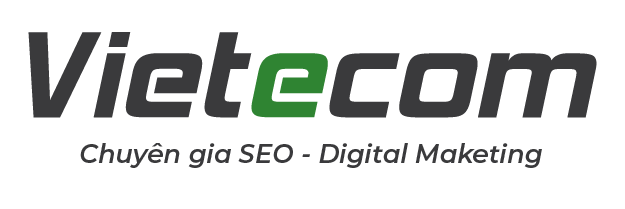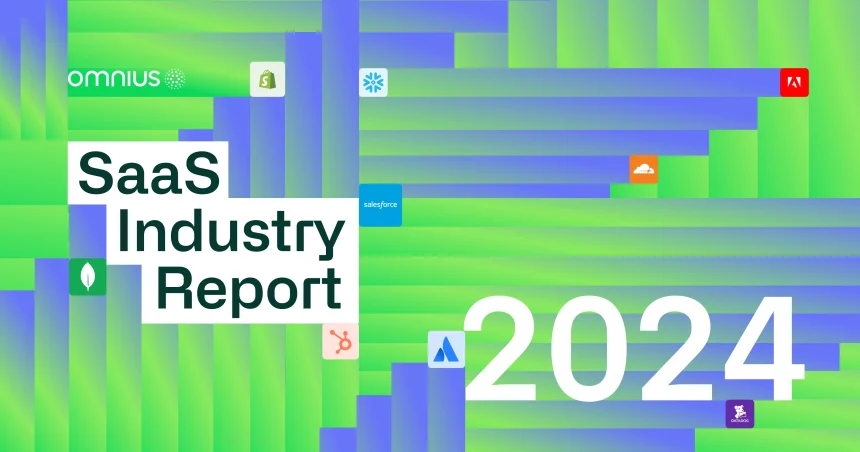SaaS companies are one of the shiniest jewels in the worldwide innovation economy crown.
It represents a huge part of the total tech ecosystem, with $207.39 billion VC invested already this year and startups collectively valued around $273 billion in 2024.
And it is still growing.
This niche remains a beacon for both founders and investors worldwide.
There is particular interest from US investors, who have contributed almost as much as domestic investors this year.
And an appetite for AI that is growing rapidly has largely driven this interest.
So, companies are looking very closely at how much they spend on software in recent days.
This report provides a comprehensive overview of the SaaS industry in 2024, highlighting key trends, market players, and growth areas.
1. Biggest Media News in the SaaS Industry in 2024
The SaaS industry has seen significant developments in 2024, with major players making strategic moves to strengthen their market positions.
Companies like LinkedIn and Zendesk are leading with notable price increases, suggesting they are adapting to market pressures and aiming to maintain profitability amidst rising churn rates.
For example, LinkedIn raised their pricing on the Career Pages – SMB Basic package from $10K to $20K, reflecting the broader trend of increasing costs in the SaaS sector.
On the other hand, Zendesk increased its pricing, with a reported 13% rise in cost per user, according to Vendr.
This highlights the challenges SaaS companies face in balancing pricing with customer retention.
But that’s only one of the biggest media news when it comes to the SaaS industry.
Here are the other key ones you might be willing to know:
- Salesforce’s Integration of Slack: Salesforce successfully integrated Slack into its ecosystem, enhancing collaboration tools for businesses and reinforcing its position in the enterprise software market.
- Adobe’s AI-Powered Update: Adobe launched a significant update to its Creative Cloud suite, integrating advanced AI features to enhance user experience and streamline workflows.
- Microsoft’s Azure Growth: Microsoft reported a 20% increase in Azure revenue in Q1 2024, highlighting its strong position in the cloud market.
- Shopify’s International Expansion: Shopify announced its expansion into new markets, including Southeast Asia and Africa, to tap into growing e-commerce opportunities.
- OpenAI and Microsoft Partnership: OpenAI and Microsoft deepened their partnership, integrating OpenAI’s advanced language models into Microsoft products like Word and Excel.
- Regulatory Changes: New data privacy regulations in the EU and California are prompting SaaS companies to enhance their compliance measures.
- Zoom’s Acquisition of Five9: Zoom finalized its acquisition of Five9, a cloud contact center software provider, to enhance its offerings in customer engagement.
- ServiceNow’s Growth: ServiceNow reported a 25% increase in revenue for Q2 2024, driven by demand for its IT service management solutions.
- Funding for Emerging SaaS Startups: Several emerging SaaS startups secured significant funding rounds in 2024, reflecting investor confidence in innovative solutions.
2. General Trends of the SaaS Industry 2024
The SaaS industry continued its rapid evolution in 2024, with several key trends shaping the landscape.
Growth is slower and harder than the zero interest rate environments a few years ago.
The average yearly deal size went up by 43% in 2023 in the last quarter, but it’s still less than what it was, on average, over the last four years.
Most SaaS companies treated pricing as an afterthought when it came to their growth strategy, mainly focusing and investing their time and budget on their customer acquisition and retention.
Companies are making new money, but they’re losing more of it than before because customers are leaving more.

Churn’s revenue impact is now at an all-time high since different companies started tracking it.
Here’s the subscription churn of all B2B SaaS companies tracked by ProfitWell metrics:

Comparing 2024 to 2022, here are the average monthly revenue churn rates:

You can see the spaces where churn rates were from 0-0.9%, 10-14.9%, and 15% and more, and how they grew from 2022 to 2024.
Besides the market changes and everything happening in the global economy, this depends on the pricing changes, but also how businesses are making their pricing decisions and what are their go-to-market strategies.
Based on the 760 B2B SaaS leaders and how they make their pricing decisions, here are the go-to-market models of the respondents:

Since pricing strategies are all grounded in metrics and data, focusing on the right metrics can bring revenue growth back.
Key Insights
Here are the several key trends shaping the niche:
- AI Integration: AI and machine learning are becoming integral to SaaS offerings, with 87% of SaaS companies reporting improved growth rates through AI-driven personalization.
- Rise of Vertical SaaS: There’s a growing trend towards vertical SaaS solutions tailored for specific industries. The vertical SaaS market is expected to reach $157.4 billion by 2025, expanding at a CAGR of 23.9%.
- Low-Code Development Tools: The demand for low-code and no-code development platforms is surging, with the market expected to reach $32 billion by the end of 2024.
- Platform as a Service (PaaS) Migration: Many companies are shifting towards PaaS solutions to streamline operations and enhance scalability.
- Market Consolidation: The SaaS market is experiencing significant consolidation, with larger companies acquiring smaller firms to enhance their service offerings.
- API Connectivity Demand: There’s an increasing need for enhanced API connections among SaaS products, facilitating better interoperability.
- Customer Success Focus: SaaS companies are increasingly focusing on customer success strategies, integrating AI-driven solutions to improve customer service and engagement.
3. Biggest Players in SaaS Market for 2024
The top SaaS companies by market share in 2024 included Salesforce, Microsoft, Adobe, SAP, Oracle, ServiceNow, Zoom, Shopify, Atlassian, and HubSpot.
These industry leaders reported strong growth, with Microsoft revenue increasing by 15.67%, ServiceNow revenue jumping 24.17% in Q2, and HubSpot seeing a 23.13% rise in revenue.
Here are the top SaaS companies by market share and their growth trends:

4. Fastest Growing SaaS Startups and Companies in 2024
Software companies grew slower in 2022 than in recent years.
After doing really well in 2020 and 2021, things slowed down in 2022.
The best-performing companies (with yearly sales between $1 and $30 million) grew by 62.1% in 2022.
This is less than the 93.4% in 2020 and 78.9% in 2021.
After about a year and a half of slow growth, companies are starting to get more new customers again.
We’re seeing some positive signs.
Companies making over $1 million a year started getting more new customers in early 2023.
Several SaaS startups and emerging companies experienced exponential growth in 2024, with Zscaler, Samsara, and Snowflake leading the pack.
These fast-growing firms showcased impressive growth in the last year and are continuing to dominate their niche throughout this year:

When it comes to the most promising European startups that are valued under $1 billion, here is the list of total funding for the ones that got the most funding starting in 2017:

5. Biggest SaaS Categories
The SaaS industry was dominated by several key categories in 2024, including Customer Relationship Management (CRM), Enterprise Resource Planning (ERP), Human Resource Management (HRM), Collaboration and Productivity Tools, and Marketing Automation.
These categories accounted for significant market share and are projected to continue growing at double-digit rates in the coming years.
Here it is more in detail:

6. Fastest Growing SaaS Categories
Certain SaaS categories stood out for their exceptional growth in 2024, with AI-powered solutions, vertical SaaS, collaboration tools, data analytics, and marketing automation leading the pack.
These categories are expected to grow at CAGRs ranging from 15% to 30% in the coming years, driven by increasing demand for advanced technologies and industry-specific solutions.
Here are the projected CAGRs for every category individually:

7. SaaS VC Landscape
The money given to new companies just starting out stays about the same as it has been before.
But for companies that are a Series B+ and looking for more money, the amounts have mostly gone down.
This matches what’s happening in the whole tech world right now.
Here’s the median round size by stage for UK startups, for example, according to Dealroom:

The venture capital landscape for SaaS in 2024 shows signs of recovery after a downturn in previous years:
- Global VC funding hit a five-quarter high of $79 billion in Q2 2024.
- The VC industry has $317 billion in dry powder available for investment.
Key investment trends include:
- Focus on AI and Blockchain: The global AI market is expected to grow at a CAGR of over 37% from 2023 to 2030.
- Rise of Climate Tech: Climate tech startups have seen funding triple since 2020 to over $35 billion globally.
- Sustainable Startups: Eco-friendly startups are gaining traction among VCs.
- Future of Work Technologies: Solutions facilitating remote and hybrid work are attracting significant VC interest.
Here are the biggest SaaS investments in 2024:

8. SaaS Marketing Trends and Stats in 2024
SaaS marketing strategies evolved in 2024, with a strong emphasis on AI and machine learning integration, video marketing, customer retention, personalization, SEO, flexible pricing models, and security features.
These trends helped SaaS companies drive growth and engage customers more effectively.
According to MicroConf research, 64% of respondents do not use paid advertising.
Here are some interesting stats on that note:
- Marketing campaign ROI for PPC is 31%, while for SEO, it’s 702%.
- The average cost per lead for Paid marketing is $280, and for organic, it is $147.
- Organic traffic has a 10% MoM growth on average.
Many SaaS companies are leveraging lower-cost marketing activities, such as SEO, word of mouth, and content marketing, especially at the start.
This leads to the question if more investment in other activities could impact growth?
Demandmaven came to the conclusion that LTV greatly influences marketing channel investments.

So what are the ones that SaaS businesses are implementing and using to boost their growth in 2024?
Here are some interesting stats and trends:
- AI and Machine Learning Integration: 87% of SaaS companies report improved growth rates through AI-driven personalization.
- Video Marketing: Visitors spend 260% more time on web pages with videos.
- Emphasis on Customer Retention: Retaining existing customers is significantly more cost-effective than acquiring new ones.
- Enhanced Personalization: Advanced personalization includes tailored recommendations, customized features, and value-driven content in communications.
- SEO as a Core Strategy: SEO is becoming a fundamental pillar of SaaS marketing strategies.
- Flexible Pricing Models: SaaS companies are adopting more flexible pricing strategies, including tiered pricing and pay-as-you-go models.
- Focus on Security and Compliance: Features like zero-trust architecture and compliance automation are becoming key selling points.
9. Geographical SaaS Segmentation and Data
The SaaS market remained geographically diverse in 2024, with North America accounting for the largest share at around 50%.
The United States accounts for the largest SaaS market revenue, with around $135 billion in 2023.
The European VC market shows signs of recovery, with projected investments of $77 billion in 2023.
However, emerging markets like India and Brazil are becoming attractive for VC investments.
For example, India’s SaaS industry is projected to secure 4-6% of the global SaaS market by 2030, reaching a market value of $50-70 billion.
Here are the countires with the most VC funding worldwide from 2019 to 2024:

Key Insights

Conclusion
Even though the economy is tough, people are still buying and renewing software for their businesses.
But it’s taking longer, costing more, and people are looking at it more closely. In short, buying software is hard right now.
As the industry continues to evolve, we can expect further innovations and shifts in the niche, driven by technological advancements and changing market demands.
We started Omnius because we think buying and selling software should be easy. We believe having good information is the key to making this happen.
That’s why we share this report.
To help you make the best decisions for your business and grow faster at a lower cost.
Let’s finish 2024 strong and prepare you for significant growth in 2025.
Nguồn: omnius.so








